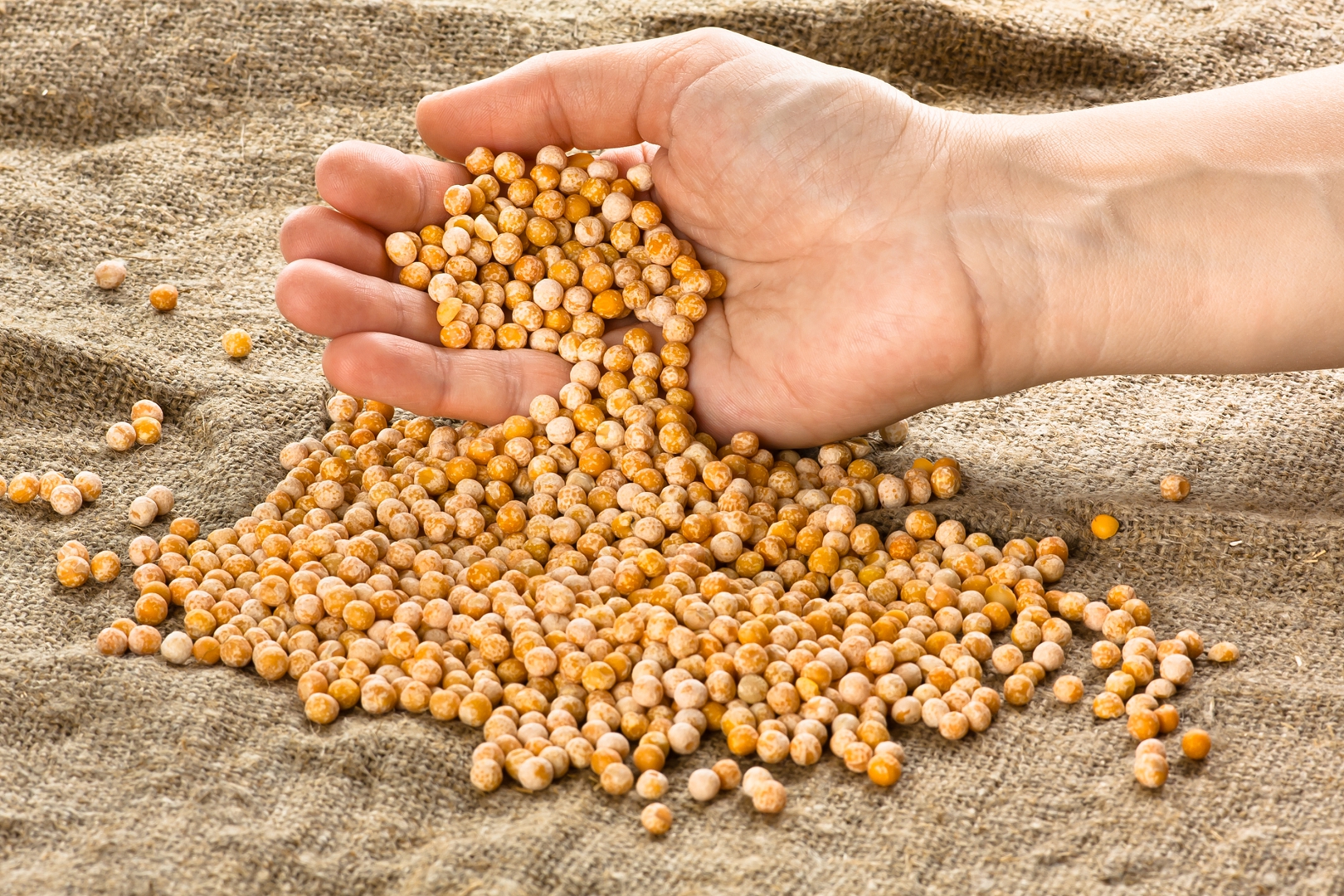Peas



Usually for peas it's being allocated the fields of previously enriched fields of winter spring grain crops, tilled lands ( potato, corn, sugar beet). Peas should not be placed after other leguminous crops and perennial leguminous grasses, as well as returning peas to the crop rotation field earlier than 5-6 years, because of the hazard of being affected by pests and diseases.

Fertilizers using system
To improve soil fertility of the land, it’s very important to use of mineral and organic fertilizers. They contribute to the accelerated and more friendly emergence of plant shoots of sown crops, improve the development of above-ground vegetative mass of plants. The system of crops is developing more by using fertilizers. For the formation of 1 ton of seeds and the corresponding number of other organs, peas consume nitrogen - 45-60 kg, phosphorus - 16-20 kg, potassium - 20-30 kg, calcium - 25-30 kg and magnesium - 8-13 kg, as well as trace elements - molybdenum, boron and others. Throughout the growing season peas use nitrogen unevenly. Under favorable conditions for legume-rhizobial symbiosis, the most part of the nitrogen (70-75% of total consumption) the plants can obtain by symbiotic fixation of air nitrogen. Under optimal conditions of symbiosis, the application of nitrogen fertilizers before sowing is useless.

Sowing
Seeds must meet the requirements of GOST: RS – purity 99%, germination 95%. Before sowing, the seeds, if necessary, are being sorted and treated against diseases.
Peas should be sown at the same time with early spring grain crops, as it is moisture-loving and cold-resistant. With such a seeding, the pea forms the root system more quickly and the above- ground organs are less damaged by powdery mildew and aphids. Peas are more often sown with ordinary (15 cm) and narrow (7.5 cm) methods. Sowing depth depends on soil and meteorological conditions. The depth of sowing pea seeds is 4-6 cm on heavy soils and 6-7 cm on soft soils. If the sowing depth turned to be small, then the germination is greatly reduced. The norm of seeding of peas depends on the zone, the features of the type, granulometric composition of the soil and other factors. It fluctuates from 0.8 to 1.4 million germinating seeds per hectare.

Harvesting
Lodging, as well as uneven ripening of peas makes harvesting difficult, therefore, it is carried out in a separate way. When browning 70-78% of the beans, the peas are cut across the field, and the short (up to 40 cm) - at an angle of 45 ° to it or towards the field. By this time the filling of the seeds ends, their moisture content is 35-40%. Duration of mowing should be no more than 3-4 days, in this case, the loss is minimal. Selection and threshing of the rolls is carried out with grain combines with seed moisture of 16-19% (usually 2-3 days after mowing).
If seeds’ moisture is less than 15%, they can break up during threshing, and wet seeds can be severely damaged. Threshing quality is checked during the day. When dry mass, the gaps between drum whips and strips of the deck are increased, and when it's wet, they are reduced. In order to remove in timely manner and without losses and damages, the valuable in the feed relation non-grain part of the crop, are used harvesters with universal shredders and interchangeable trailers for harvesting and transportation to the places of straw stacking.

Soil treatment system
The system of the main tillage depends on the type of crop, its predecessor, field contamination and the period of harvest. After harvesting the winter grain crops, it's being started peeling the stubble to grind crop residues, close moisture and provoke weed seeds to germinate. If the field is littered with root-weed plants, then 2 weeks after the first peeling, the second can be carried out with plowing tools to a depth of 10-12 cm, and then after 8-10 days - plowing with plows with coulters. In early spring, with the physical ripeness of the soil, it's being started the pre- sowing treatment of the soil with heavy tooth harrows. Before sowing, the field is cultivated to a depth of seed embedding (6-8 cm), with simultaneous harrowing.

Crop care
After sowing, especially in dry weather, in order to improve the contact of the seeds with the soil and increase the moisture from the lower layers to the seeds, it’s rolled by ring-heel rollers. Peas are damaged greatly because of weeds. 4-5 days after sowing, when weed shoots are in the white thread phase, it should be carried out the pre-emergence harrowing with average tooth harrows BZSS-1, thereby destroying 60-80% of annual weeds. In the phase of 3-5 leaves, the seedlings are harrowed during the daytime (the turgor state of the plants is reduced). if to place peas at a distance of less than 500 m from perennial grasses, it is damaged by pea aphids.

Harvest cleaning
Grain coming from combines is passed through pre-cleaning machines which are the part of a grain cleaning and drying complex. Further primary and secondary purification of pea grain is carried out by specialized machines. Grain mass coming for primary cleaning should have a moisture content of not more than 18%, and impurity not more than 8%.
The main event ensuring reliable seed preservation is drying to a standard condition. Drying seeds - the most difficult and responsible operation in technological process of post-harvest processing. If the grain after the cleaning has a moisture content of more than 18%, then it should be slightly dried.
To ensure the uniform drying in ventilated bunkers, it is necessary to mix the seeds periodically by moving them from one bunker to another. For these purposes, one bunker is left empty. After drying, the seeds are sorted on air-graded secondary cleaning machines and pneumatic tables to make the seeds meet to the necessary requirements.


